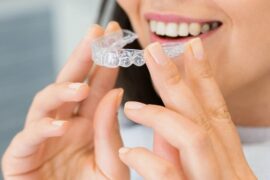You may finish off every meal with a refreshing glass of fresh water, but did you know your food depends on the healthiness of this necessary substance, too?
If you read the package labels of your food, research the manufacturer and go out of your way to skim the list of ingredients, make sure you do your research when it comes to the water sources that helped produce your food, too.
From sirloin steaks to juicy red cherries, every food imaginable requires this life-granting substance during cultivation. When you think about what makes your breakfast, lunch and dinner healthy, do you consider the water that goes into each meal’s production?
The Extensive Impact of Water on Crops and Cultivation
It’s no secret we all need a healthy diet to thrive, but we also require access to pure and potable water sources. But what if I told you the two are inevitably connected, and the existence of wholesome nutrition depends on water accessibility, as well?
While we live in a world composed mainly of water, only about 2.5 percent of this vital source is fresh and usable. And not all that H2O is accessible, either — researchers estimate only one percent is available for human use.
When you take that figure into account with the increasingly booming population and the accumulating need for fresh water and food, this data seems even more staggering. After all, water is an essential part of food production, and you need both food and drinkable sources to power through your daily life.
Why the Food You Eat May Contain Different Levels of Healthiness
Just because you bought that pork chop in your local supermarket doesn’t mean it was produced in the same vicinity. In fact, an astonishing 15 percent of all food consumed in the U.S. is imported — and that number is even higher when it comes to fresh vegetables, fruit and seafood.
While it may be tempting to bite into an authentic taste of Brazil while chowing down on fresh passion fruits and guavas, it’s crucial to understand various other water sources went into the cultivation of that fruit.
Digging into one single meal can include foods produced within a variety of lands and various other countries. After all, food production is a water-intensive process — which means water bodies from all over the world contribute to the nutrients you devour daily.
The existence of healthy water is the No. 1 ingredient in the production of healthy food. It takes immensely large quantities of water to cultivate, grow and transport everything we eat, so emphasizing the use of healthy water in the food sector is essential to maintaining a wholesome diet.
Skipping Water-Intensive Food Sources for Better Results
Did you know some of the most water-intensive food sources just so happen to be among the unhealthiest nutritional items, too?
If you’ve ever wondered why fast food is so cheap, the quick need to produce meals, coupled with cost-cutting measures, is the main reason. In fact, food prepared in these fast-paced settings often results in the production of pathogens, drugs, hormones and fertilizers that seep into our precious water supply during the process.
Opt to eat plant-based foods whenever you need the added assurance of quality control on your plate. You can eat healthily and feel good about what’s in every meal, too.
Making Meals Healthier Through Dredging
Over time, sediments and debris pile up on the floor of lakes, harbours and shores — forming buildup until these water bodies begin to fill entirely.
While these residues often sit at the bottom of waterways, regulating their continued expansion is a necessary part of controlling the flow of water bodies throughout the world — which is where dredging comes into play.
Dredging is an essential part of cleaning waterways that also inevitably promotes healthier agricultural purposes in the process. While the primary intent of this act is clearing pathways up more freely in oceans and other streams, the process of dredging also offers numerous environmental benefits and perks, as well.
When it comes to eating well, you want to know nourishing water supplies went into the production of your food, too. Dredging helps filter out any contaminants so future food sources, such as crabs, lobster, shrimp and fish, aren’t at risk of ingesting any of these toxins along the way.
Every component that goes into your food is important — and water is no exception. From the very earliest stages of production to the moment that first delicious bite enters your mouth, make sure healthy water goes into every piece of food you prepare in your home.
Author Bio
Emily is a freelance writer, covering conservation and sustainability. You can read her blog, Conservation Folks, for more of her work.
You can read another one of her articles here – https://artofhealthyliving.com/avoid-pesticides-insecticides-food/



































